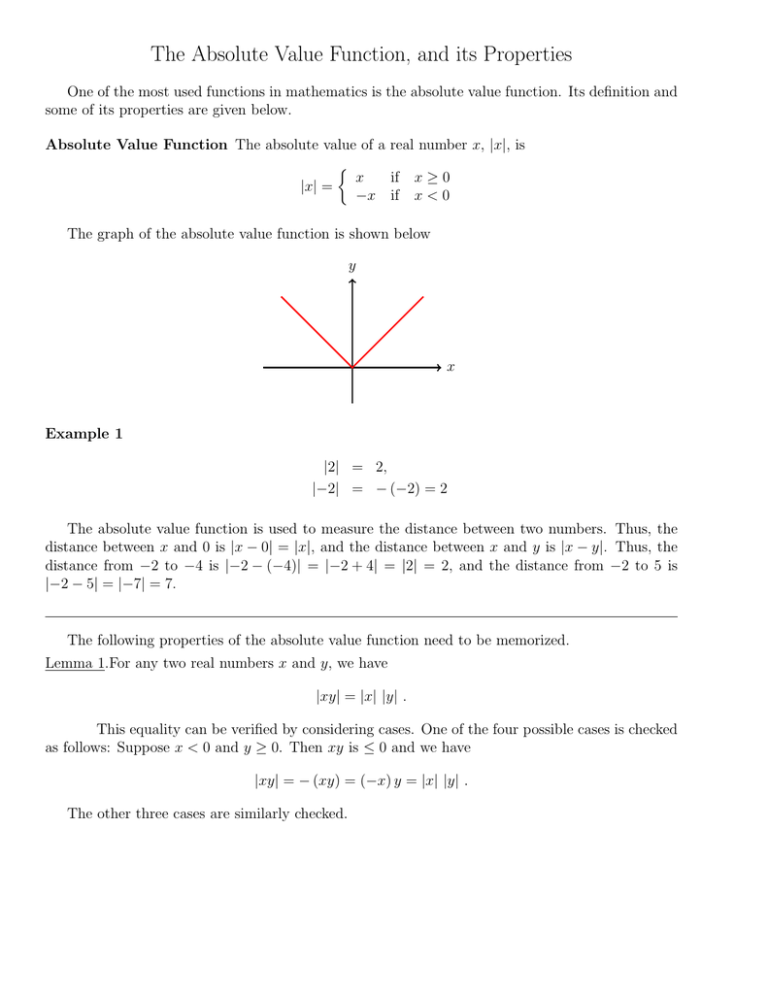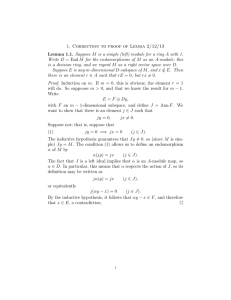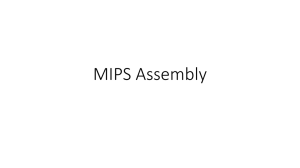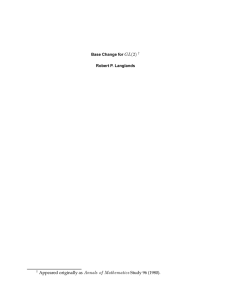Absolute Value Function: Definition & Properties
advertisement

The Absolute Value Function, and its Properties One of the most used functions in mathematics is the absolute value function. Its definition and some of its properties are given below. Absolute Value Function The absolute value of a real number x, |x|, is x if x ≥ 0 |x| = −x if x < 0 The graph of the absolute value function is shown below y x Example 1 |2| = 2, |−2| = − (−2) = 2 The absolute value function is used to measure the distance between two numbers. Thus, the distance between x and 0 is |x − 0| = |x|, and the distance between x and y is |x − y|. Thus, the distance from −2 to −4 is |−2 − (−4)| = |−2 + 4| = |2| = 2, and the distance from −2 to 5 is |−2 − 5| = |−7| = 7. The following properties of the absolute value function need to be memorized. Lemma 1.For any two real numbers x and y, we have |xy| = |x| |y| . This equality can be verified by considering cases. One of the four possible cases is checked as follows: Suppose x < 0 and y ≥ 0. Then xy is ≤ 0 and we have |xy| = − (xy) = (−x) y = |x| |y| . The other three cases are similarly checked. Lemma 2 For any real number x, and any nonnegative number a, we have |x| ≤ a if and only if −a ≤ x ≤ a . The is verified by considering the two possible cases x ≥ 0 and x < 0. We consider the case of x ≥ 0. So suppose x ≥ 0 and |x| ≤ a. Then we have −a ≤ 0 ≤ x = |x| ≤ a . That is, if |x| ≤ a, then −a ≤ x ≤ a. Conversely suppose x ≥ 0 and −a ≤ x ≤ a. Then we have |x| = x ≤ a . The argument for the case x < 0 is similar, and left to the reader. Lemma 3 For any real number x, and any nonnegative number a, we have |x| ≥ a if and only if x ≥ a or x ≤ −a . There are again two cases to consider: x positive or x negative. So suppose x ≥ 0. If |x| ≥ a, then we have x = |x| ≥ a On the other hand if x ≥ a, then we have |x| = x ≥ a. Conversely suppose x < 0 and |x| ≥ a, then we have −x = |x| ≥ a x ≤ −a . In the case where x < 0, if we have x ≤ −a, then |x| = −x ≥ − (−a) = a Note when x < 0 the condition x ≥ a cannot be true, since we are assuming x ≥ 0. Lemma 4 For any two real numbers x and y we have |x + y| ≤ |x| + |y| . The proof of this is again handled by considering the four possible cases determined by the signs of x and y. The simplest case being when both x and y are nonnegative; in this case we have |x + y| = x + y = |x| + |y| The other three cases are similarly dealt with. Note: in any of the above inequalities the less than or equal relation can be replaced with strict inequality. For example, |x| < a if and only if −a < x < a. Example 2 Find the interval of real numbers which contains x, if x satisfies the condition |2x − 5| < 3. |2x − 5| −3 2 1 < < < < 3 2x − 5 < 3 2x < 8 x < 9. Example 3 How close must the number x be to 4 if |3x − 12| < 5. |3x − 12| |3 (x − 4)| 3 |x − 4| |x − 4| < < < < 5. 5 5 5/3 Thus, x must be within 5/3 of 4 if 3x is to be within 5 units of 12.







